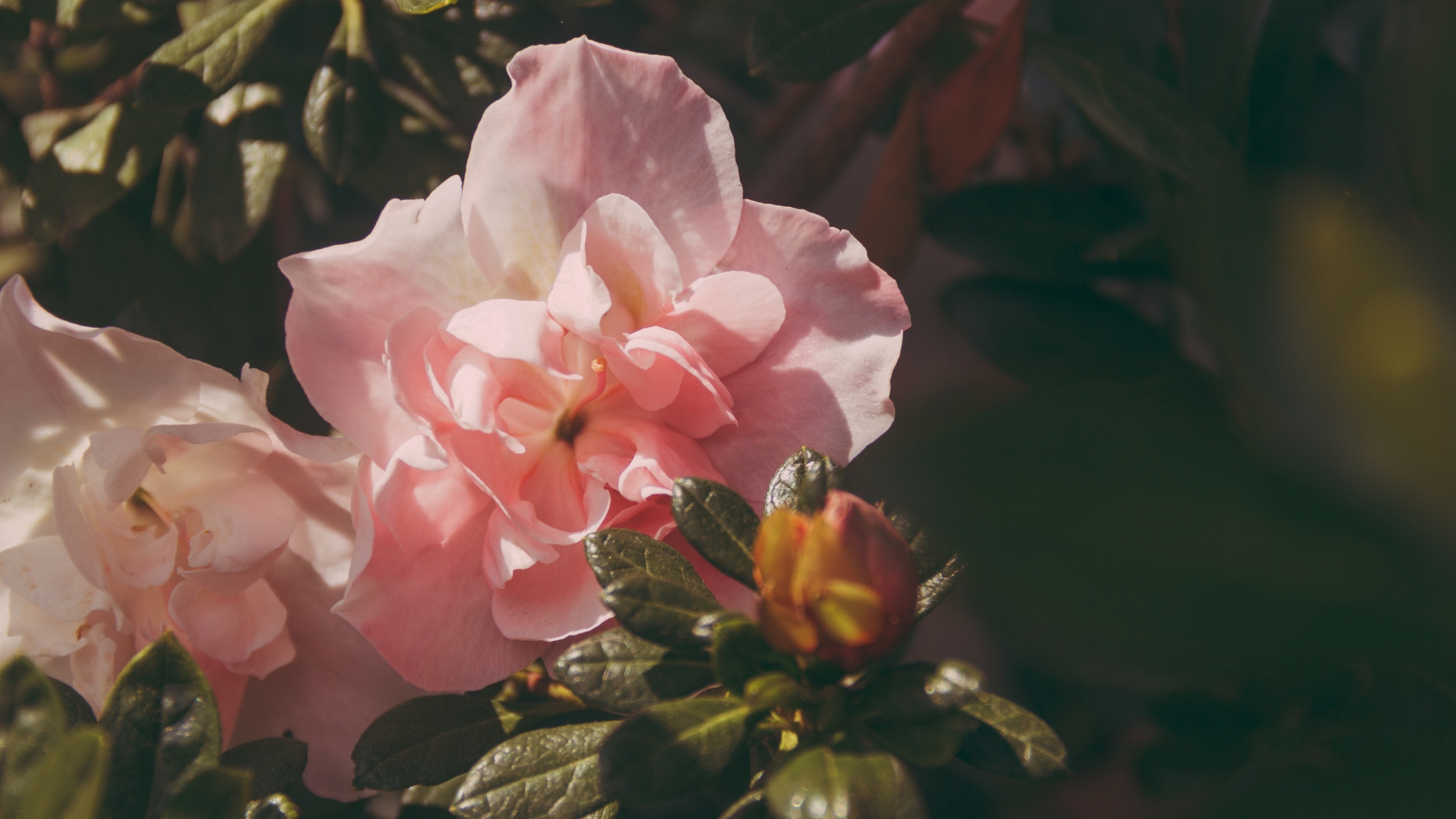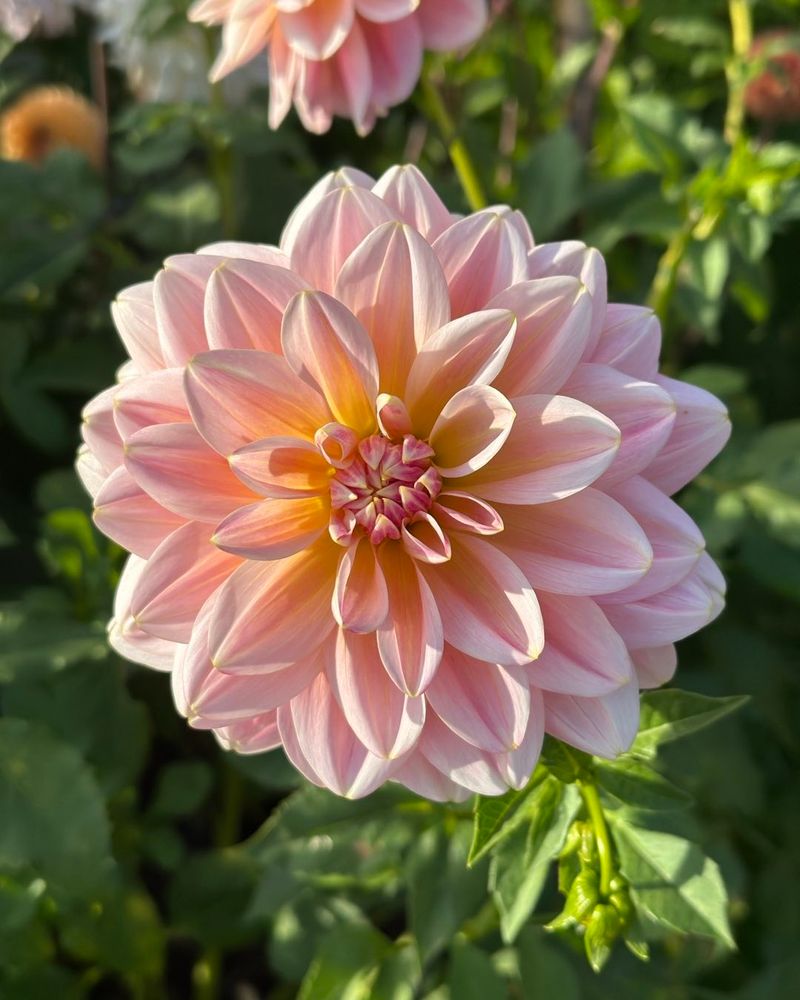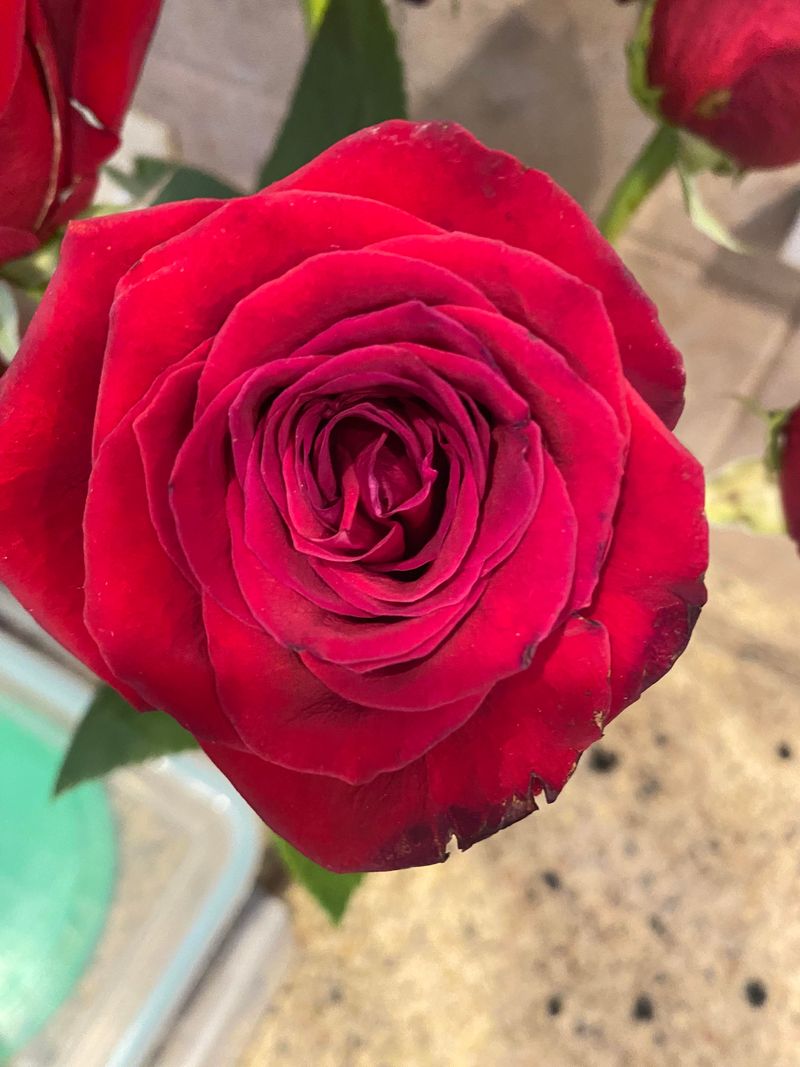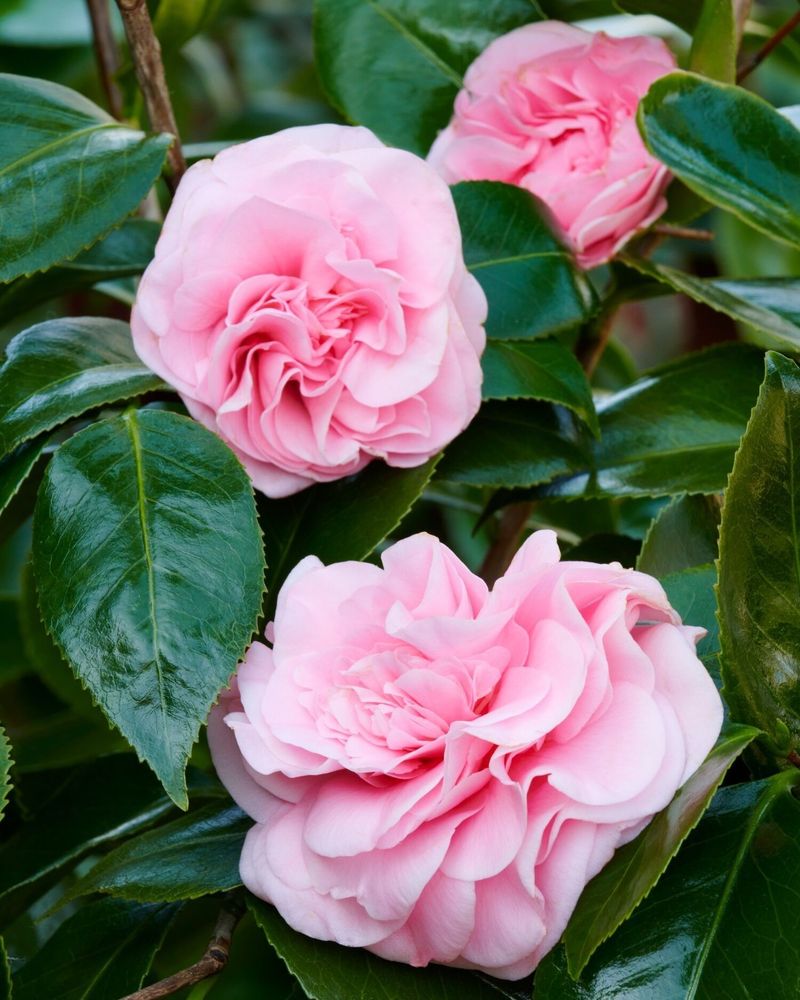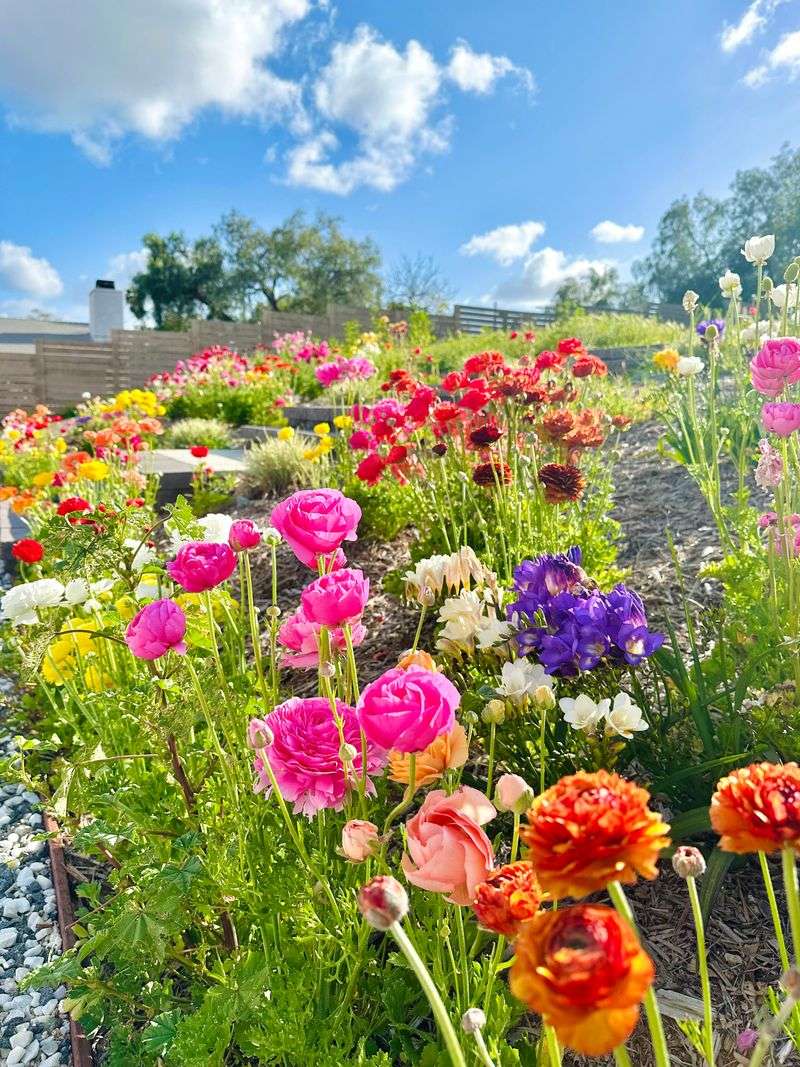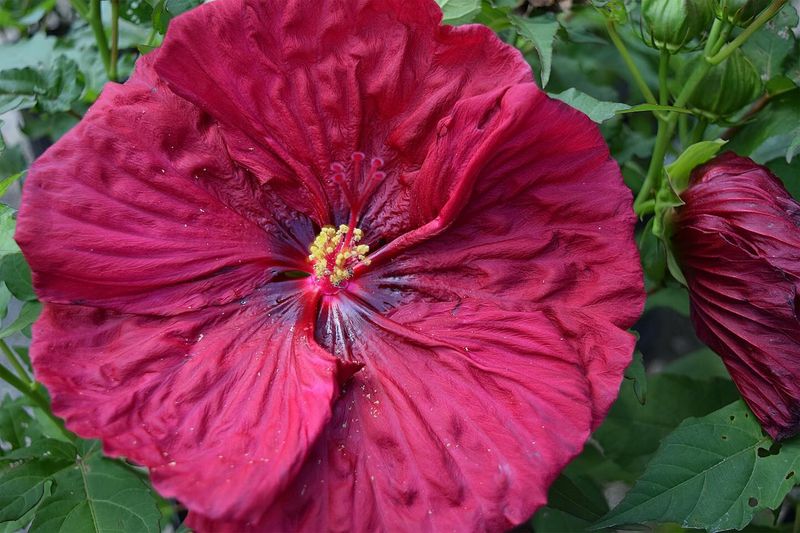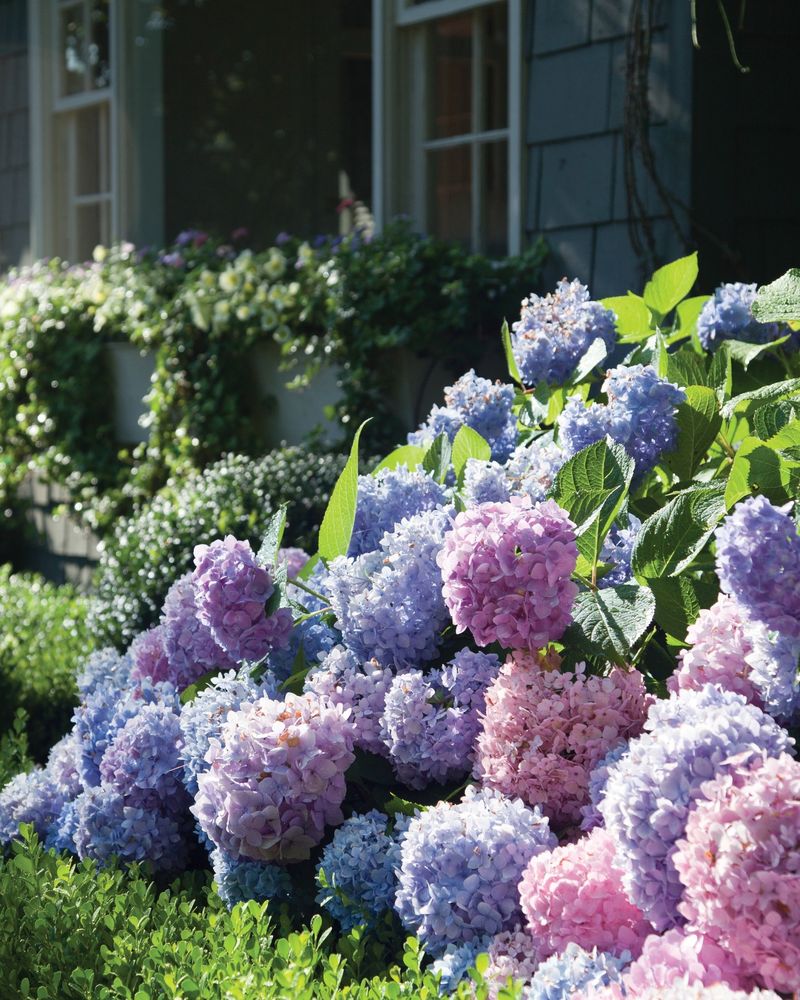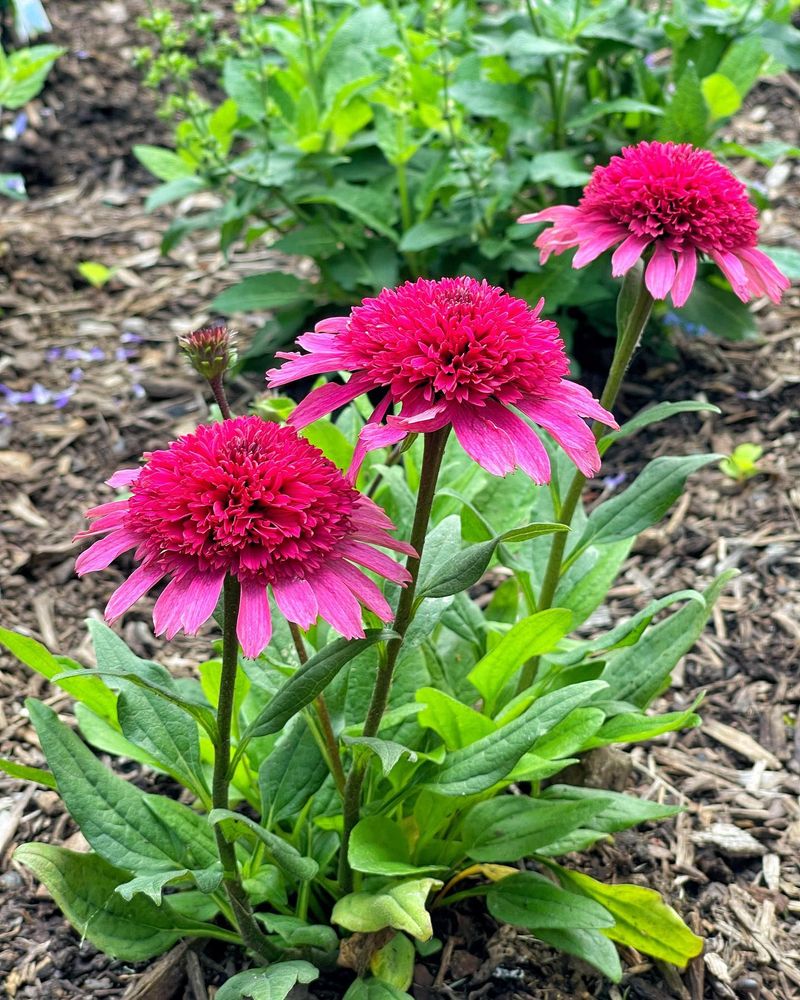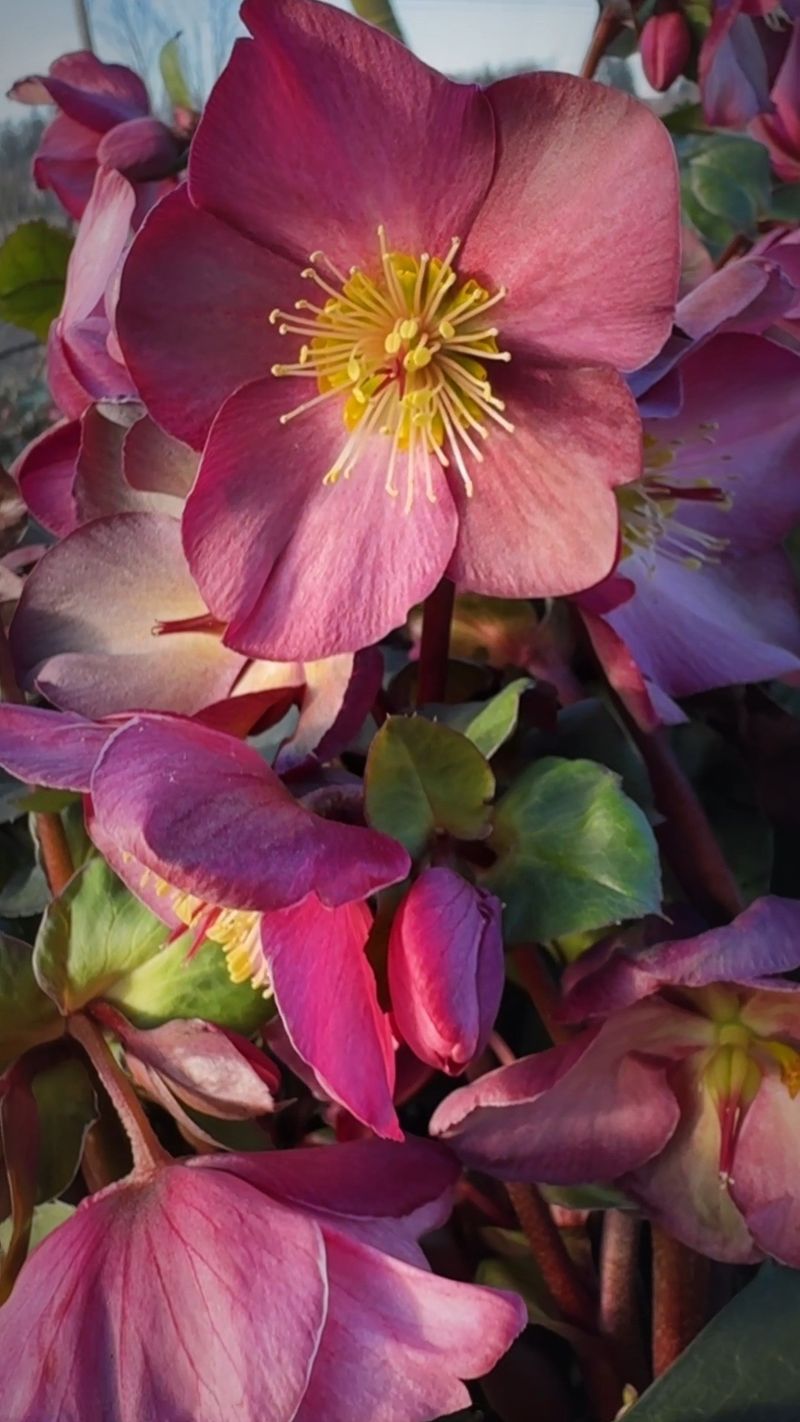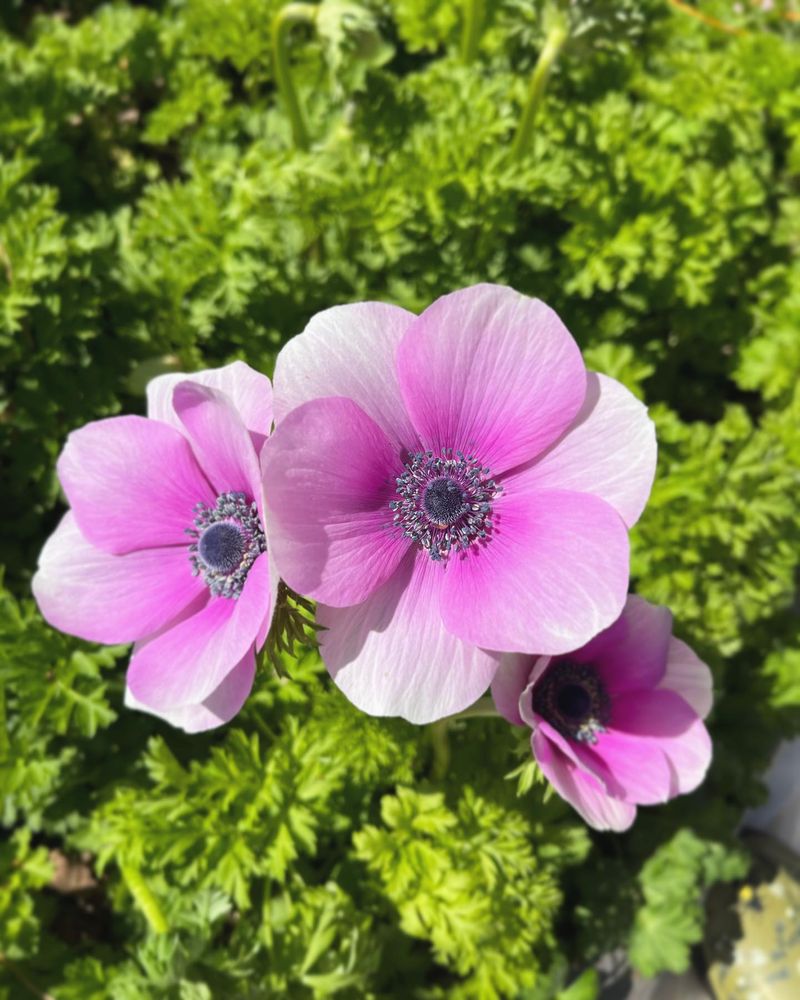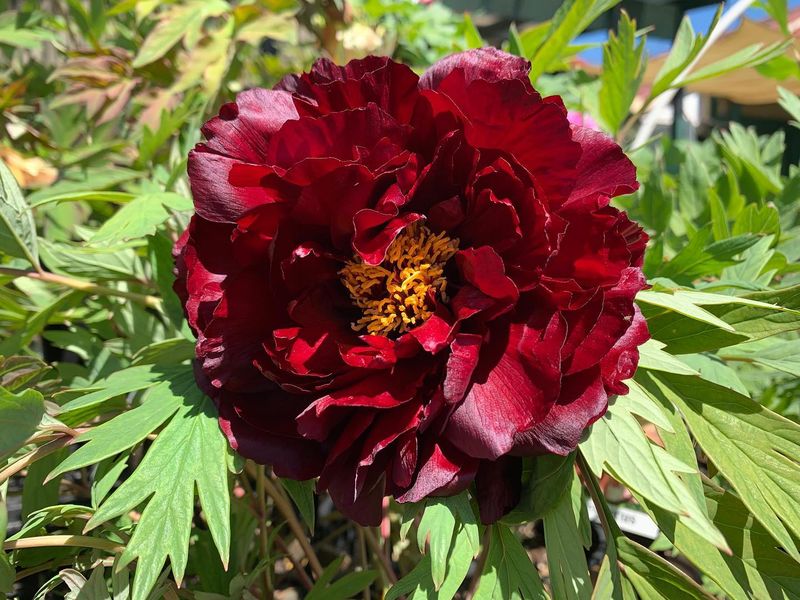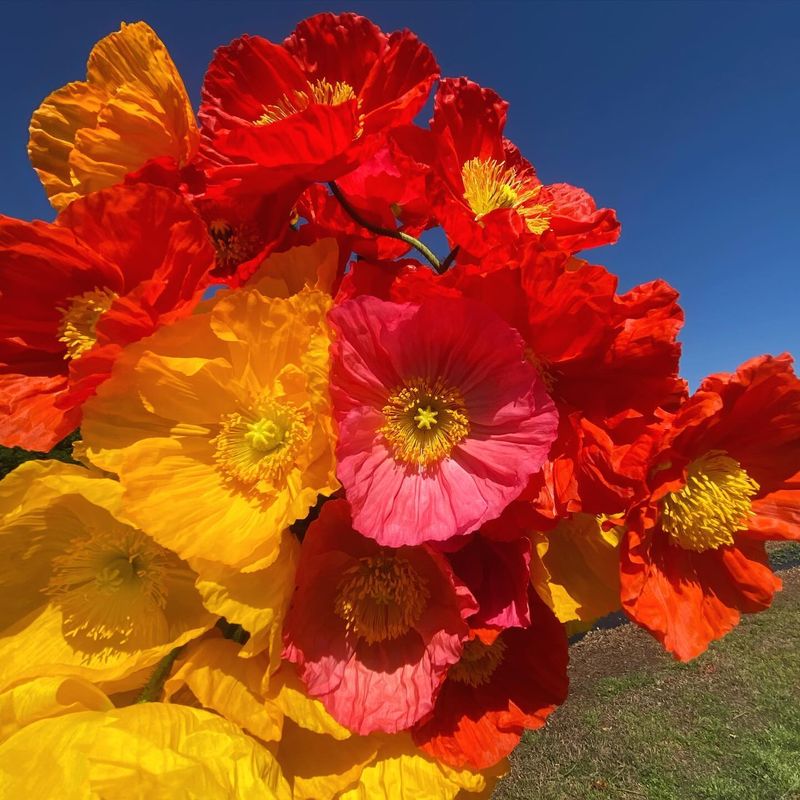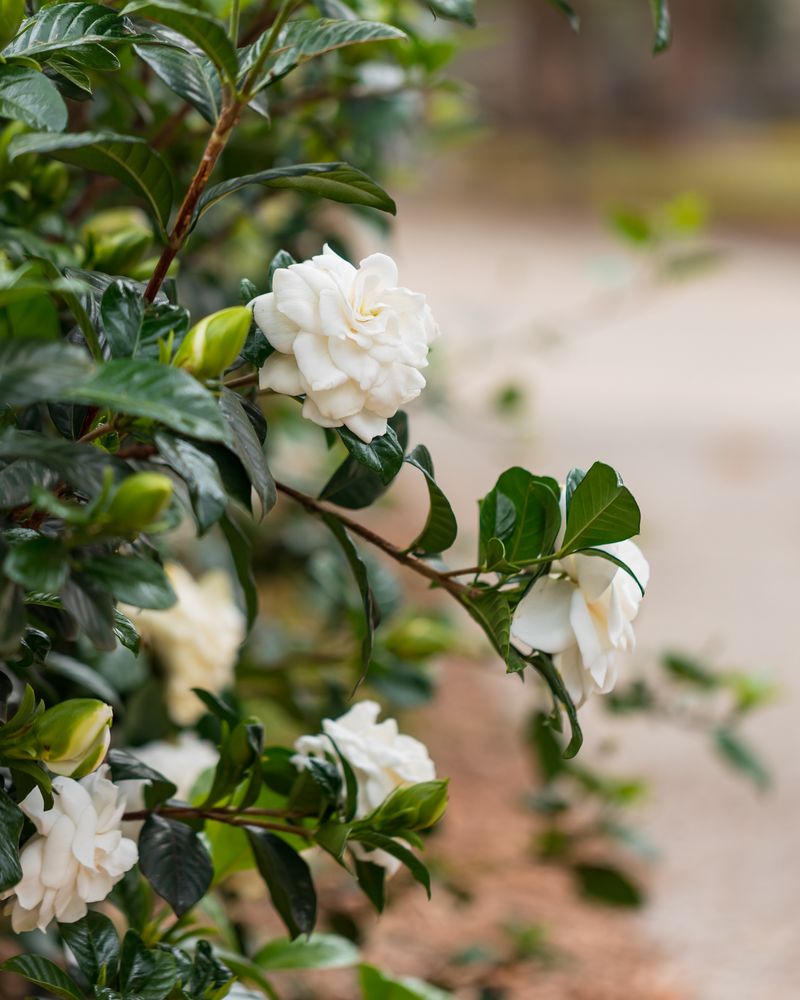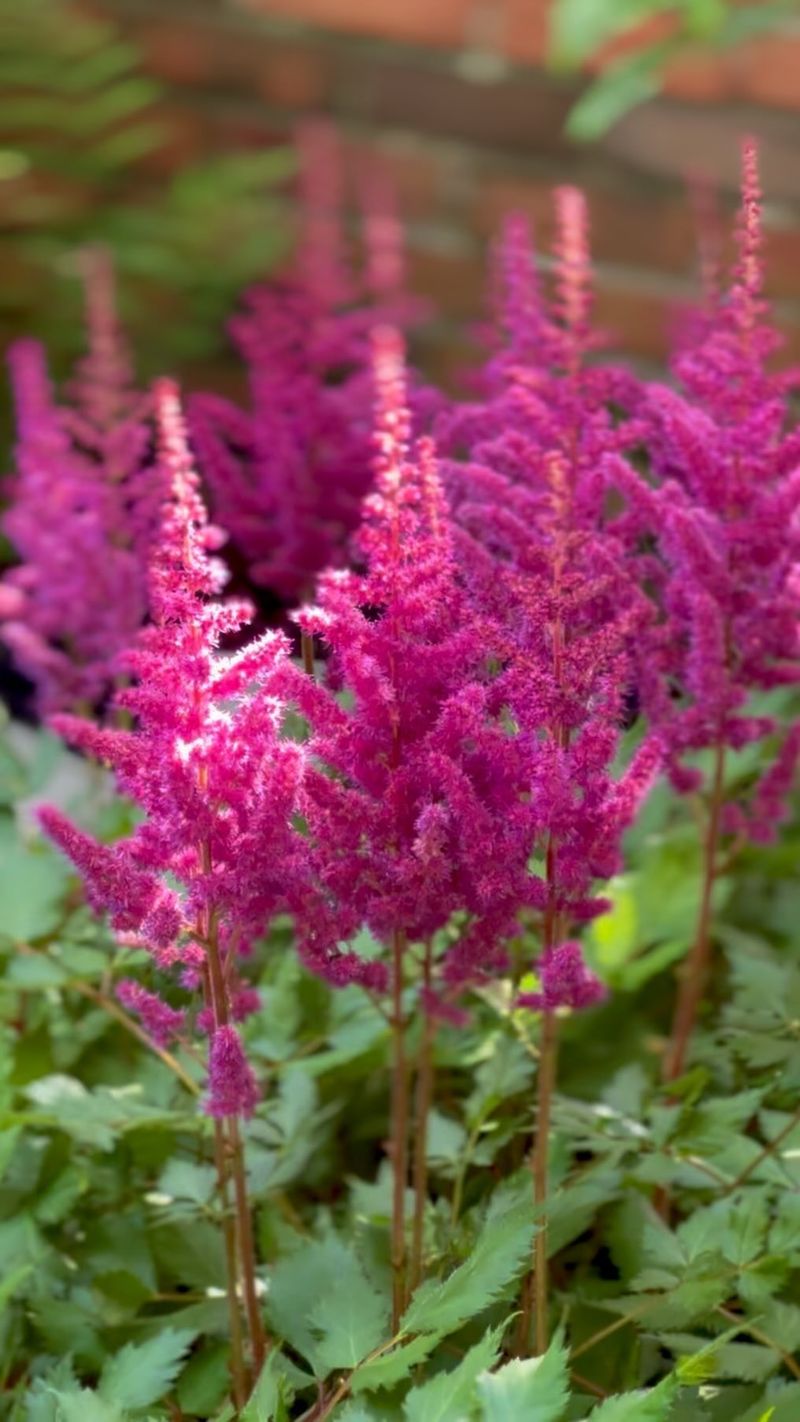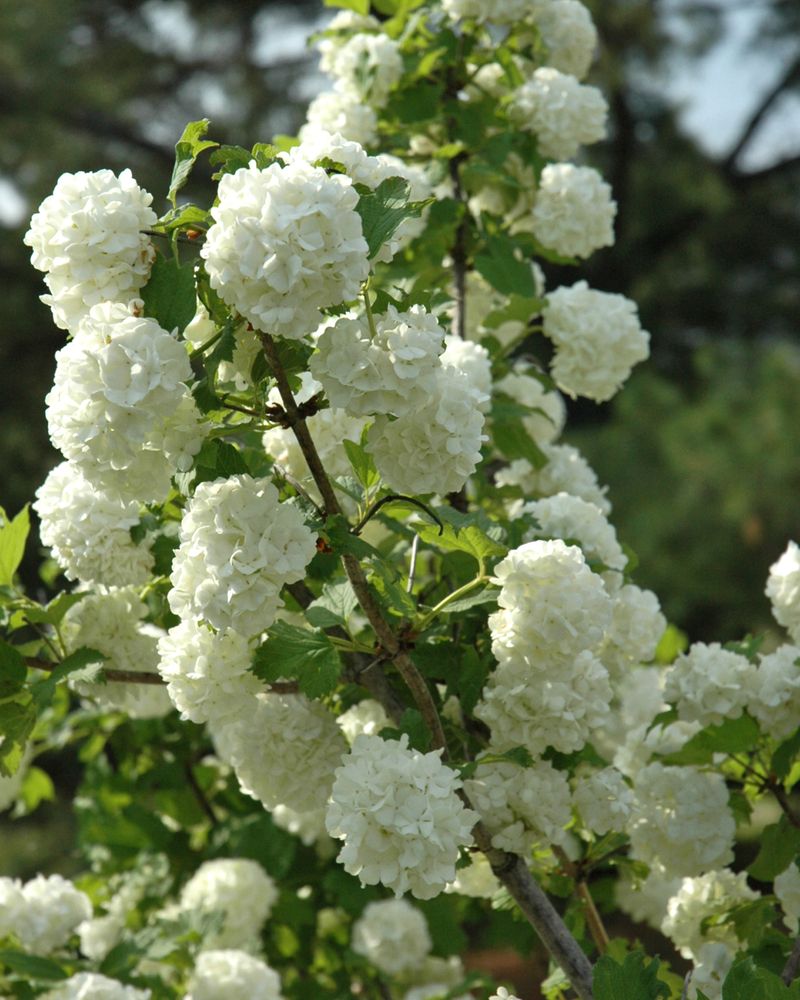If peonies aren’t your thing, or you’re looking for something a bit different, there are plenty of beautiful plants that can step in and steal the show.
Whether you want more color, longer blooms, or a unique texture, there’s a plant for every garden. From vibrant perennials to fragrant shrubs, these beauties will give your garden that pop of charm you’re after.
Let’s take a look at 15 stunning alternatives that might just become your new favorite garden star!
1. Luscious Dahlias
Ever spotted those dinner-plate sized blooms that make people stop in their tracks? Dahlias offer that same luxurious fullness as peonies but keep flowering all summer long instead of disappearing after a few weeks.
Available in nearly every color imaginable, these tubers produce gorgeous cut flowers that last ages in vases.
Unlike demanding peonies, dahlias don’t need years to establish before blooming spectacularly. Just plant the tubers after the last frost, and you’ll enjoy flowers until autumn’s first chill.
2. Romantic Roses
Nothing captures the lush, romantic feel of peonies quite like garden roses, especially the old-fashioned varieties. Modern breeding has given us disease-resistant roses that don’t require the fussy spraying routines of yesteryear.
David Austin roses, with their cupped, many-petaled blooms, mimic peonies’ fullness while offering delightful fragrance.
Unlike peonies’ brief showing, these beauties can flower repeatedly from spring through fall. For the most peony-like effect, look for varieties like ‘Jubilee Celebration’ or ‘Claire Austin’ with their sumptuous, ruffled petals.
3. Carefree Camellias
Seeking glamour when most gardens look bare? Camellias bring peony-like splendor during winter and early spring when gardens desperately need color. Their glossy evergreen leaves provide year-round structure even when they’re not in bloom.
With flowers ranging from simple singles to complex doubles that rival any peony, these woodland shrubs thrive in partial shade.
Perfect for Southern gardens, newer cold-hardy varieties now bring their elegance to northern landscapes too.
4. Regal Ranunculus
Few flowers can match the paper-thin perfection of ranunculus blooms. Their rose-like appearance features layer upon layer of delicate petals in candy-store colors that photographers and florists adore.
Growing from small corms, ranunculus produce multiple blooms per stem, making them fantastic cut flowers that last nearly two weeks in arrangements.
While peonies demand patience, ranunculus reward gardeners with flowers in their very first season. They prefer cooler temperatures, making them perfect spring bloomers in warmer climates or summer stars in northern gardens.
5. Dramatic Dinner Plate Hibiscus
When you want pure drama, nothing beats the tropical-looking dinner plate hibiscus. These hardy perennials produce the largest flowers of any perennial garden plant—sometimes reaching 12 inches across!
Unlike temperamental peonies, these show-stoppers thrive in hot, humid weather and poor soil. The massive blooms appear in late summer just when gardens need a fresh burst of color.
Despite their exotic appearance, hardy hibiscus varieties survive winter temperatures as low as -30°F, dying back to the ground but reliably returning each spring.
6. Versatile Hydrangeas
Looking for flowers with serious staying power? Hydrangeas offer months of blooms compared to peonies’ fleeting show. Modern varieties like ‘Limelight’ and ‘Annabelle’ produce massive flower heads that transition through multiple color phases as they age.
From softball-sized mopheads to airy panicles, hydrangeas bring versatility to any garden spot from partial shade to full sun.
Unlike peonies that need staking, many newer hydrangeas feature strong stems that support their generous blooms without flopping. Plus, their dried flowers provide winter interest and make excellent additions to wreaths and arrangements.
7. Elegant Coneflowers
Gone are the days when coneflowers meant only purple daisies. Today’s varieties offer double forms with frilly petals that rival peonies for sophistication while attracting beneficial pollinators to your garden.
Varieties like ‘Raspberry Truffle’ and ‘Marmalade’ feature fully double blooms in delicious colors that keep coming for months.
Unlike picky peonies, coneflowers thrive in average soil and tolerate both drought and humidity once established.
Their seed heads provide winter interest and food for goldfinches, bringing movement and life to the garden long after peonies have disappeared.
8. Heavenly Hellebores
For gardeners who can’t wait for spring, hellebores offer elegant, nodding blooms when snow still covers the ground. Also called Lenten roses, these woodland perennials feature cup-shaped flowers in sophisticated shades from slate to rose to creamy white.
Unlike peonies that vanish underground after flowering, hellebores maintain attractive evergreen foliage year-round.
Modern breeding has produced upward-facing flowers and double forms that rival small peonies for complexity.
Once established, these long-lived perennials need almost no care and gradually form impressive clumps that can live for decades in the right conditions.
9. Spectacular Sarah Bernhardt Tulips
Imagine peony-like flowers that bloom weeks earlier! Double-flowered tulips like ‘Angelique’ and ‘Sarah Bernhardt’ offer ruffled petals and lush forms that mimic peonies but arrive in early spring when gardens need color most.
Each bulb produces a perfect bloom without the years of waiting peonies require. While standard tulips often fade after a year or two, these specialty varieties tend to return reliably when planted deeply in well-drained soil.
For the ultimate peony look-alike, try planting them in clusters of seven or more bulbs to create a more substantial visual impact in the garden bed.
10. Cheerful Anemones
Want flowers that dance in the breeze? Anemones bring a light-hearted charm to gardens with their poppy-like blooms held high on wiry stems. Available in jewel-toned colors with contrasting centers, they add a different kind of elegance than formal peonies.
Fall-planted varieties bloom in spring, while spring-planted ones flower in fall, allowing for extended seasonal interest.
Unlike heavy peony blooms that often face downward after rain, anemones bounce back quickly after storms.
Their delicate appearance belies their tough nature, as they naturalize readily in partially shaded spots and return reliably year after year.
11. Magnificent Tree Peonies
If you love peonies but hate their short bloom time, tree peonies offer a gorgeous compromise. Unlike their herbaceous cousins, these woody-stemmed beauties don’t die back to the ground each year, eventually forming small shrubs up to 5 feet tall.
Their dinner-plate sized blooms arrive earlier than traditional peonies and feature dramatic colors including true yellows, deep purples, and even blacks unavailable in herbaceous types.
Though slow-growing at first, tree peonies eventually require almost no maintenance and can live for generations.
12. Whimsical Poppies
For sheer silky elegance, oriental poppies bring a different kind of drama than peonies. Their crinkled petals in shocking colors from electric orange to deep plum create unforgettable garden moments in late spring.
The satiny blooms might last only briefly, but their sculptural seed pods provide interest long afterward. Unlike peonies that need rich soil, poppies thrive in average to poor soil with excellent drainage.
Their deeply cut, architectural foliage emerges early in spring, marking their spot in the garden. Plant them with later-emerging perennials to fill in when poppies go dormant after flowering.
13. Fragrant Gardenias
When perfume matters as much as appearance, gardenias offer intoxicating fragrance that peonies can’t match. Their waxy white blooms against glossy evergreen leaves create a sophisticated southern charm in gardens and containers alike.
Modern varieties like ‘Frost Proof’ extend their growing range further north than traditional types. Unlike peonies that bloom and disappear, gardenias provide structure and fragrance for months.
Their compact growth makes them perfect for smaller spaces or container gardens where their heavenly scent can be appreciated up close on warm summer evenings.
14. Abundant Astilbes
Need something spectacular for shade? Astilbes bring feathery plumes in candy colors to spots where peonies would sulk and refuse to bloom. Their fern-like foliage looks fresh all season, providing texture even when not in flower.
From dwarf varieties just 6 inches tall to statement plants reaching 4 feet, astilbes suit gardens of any size. Unlike peonies that often need staking, these sturdy perennials stand tall without support.
Their dried flower plumes persist through winter, catching frost and snow for seasonal interest when the garden would otherwise look bare.
15. Stunning Snowball Viburnum
For gardeners wanting more than just flowers, snowball viburnums offer the complete package. Their spherical white flower clusters resemble hydrangeas but appear earlier in the season when peonies traditionally bloom.
Unlike one-season peonies, viburnums provide multi-season interest with fall color and sometimes berries after flowering.
The arching branches create a graceful silhouette in the landscape year-round. Requiring almost no maintenance once established, these long-lived shrubs can anchor garden designs for decades while providing habitat and food for beneficial wildlife.

